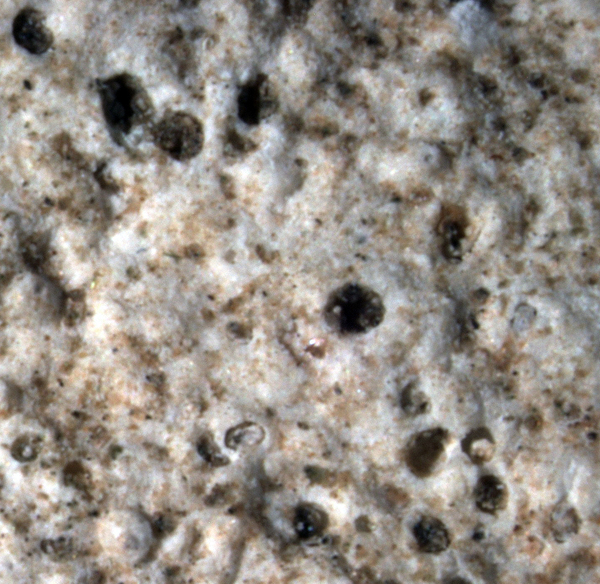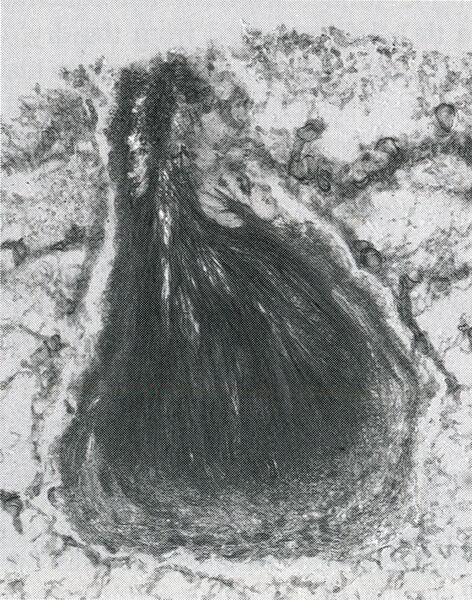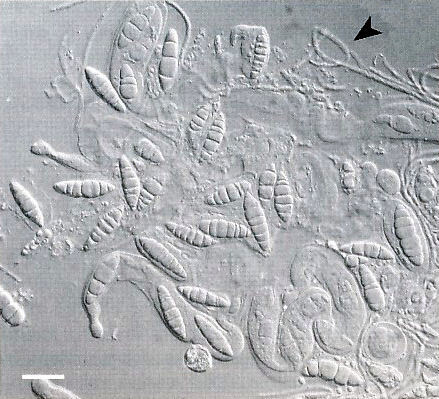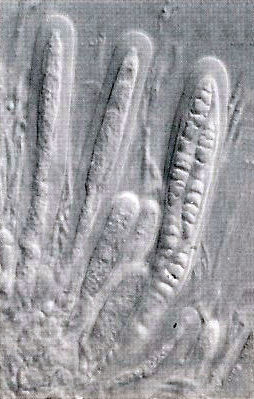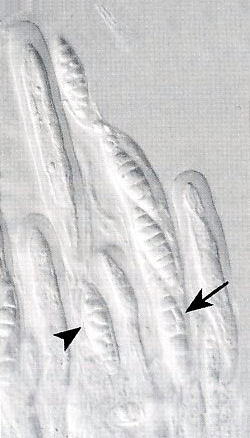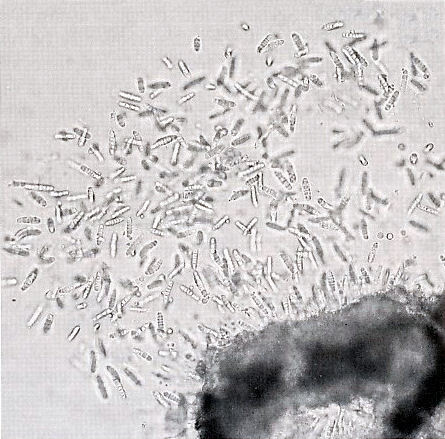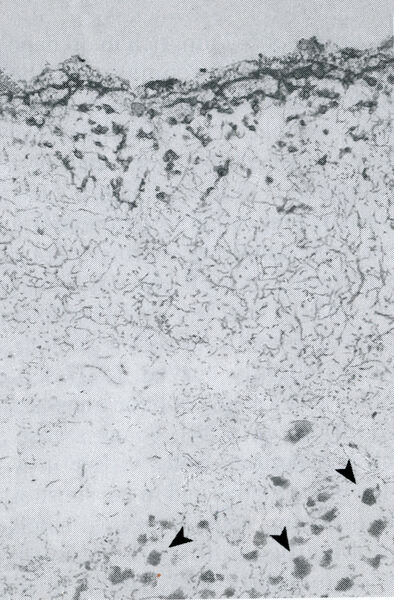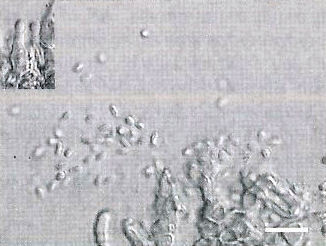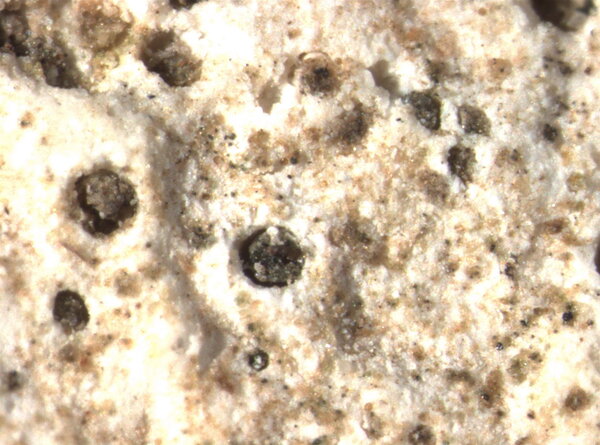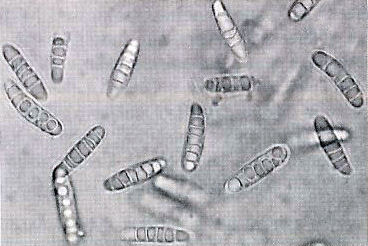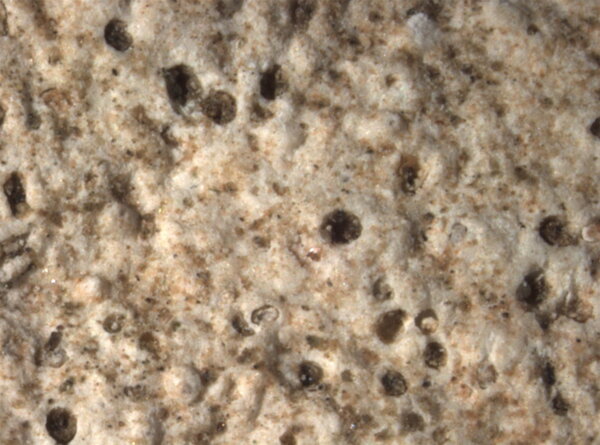Swinscowia endolithea (Cl. Roux & Bricaud) S.H. Jiang, Lücking & Sérus.
in Hongsanan & al., Fungal Divers.: 10.1007/s13225-020-00462-6, 138, 2020. Basionym: Strigula endolithea Cl. Roux & Bricaud - in Roux & Sérusiaux, Bibl. Lichenol., 90: 88, 2004.
Synonyms:
Distribution: N - VG (Tretiach & Rinino 2006).
Description: Thallus crustose, endosubstratic, penetrating to c. 4 mm in the calcareous rock, greenish grey turning whitish grey in the herbarium, continuous, often delimited from surrounding thalli by a raised hypothalline line. Perithecia 0.25-0.3 mm across, obpyriform to subglobulose, entirely immersed, colourless to light pink, without involucrellum, opening with a minute, pale brown to bluish ostiole; exciple colourless; hymenium colourless, I-; paraphysoids mostly simple, thread-like, c. 1 μm thick, longer than the asci, slightly branched and anastomosing only where adjacent to exciple. Asci 8-spored, 70-80 x 12-15 μm, cylindrical-clavate, bitunicate-fissitunicate, shortly stalked at base, the apex thickened into a tholus, with a narrow ocular chamber, I-. Ascospores (5-)7-septate, hyaline, constricted at septa, sometimes with a single longitudinal septum, 21-26 x 5.5-7 μm, the young ones sometimes with a gelatinous, 3(-4) μm thick perispore. Pycnidia often of two types. Macropycnidia 0.12-0.16 mm across, subglobose, without involucrellum, entirely immersed in the rock, colourless to pale pink, except near the ostiole which is brown to (rarely) black; macroconidia subapically inserted on the conidiogenous cell, (3-)4-7-septate, not or only slightly constricted at septa, subcylindrical to subfusiform, (15.5-)19.5-27(-33.5) x 3-6 μm, rounded at ends, with a short gelatinous appendage. Microconidia colourless, simple, ellipsoid to ovoid, (2-)3-4 x (1-)1.5-2 μm. Photobiont trentepohlioid. Spot tests: thallus K-, C-, KC-, P-. Chemistry: thallus without lichen substances.
Note: a recently-described species, hitherto known from southern France and the Park of the Miramare Castle near Trieste, on shaded calcareous rocks near the coast.
Growth form: Crustose
Substrata: rocks
Photobiont: Trentepohlia
Reproductive strategy: mainly sexual, or asexual by conidia and thalloconidia
In underhangs rarely wetted by rain
Commonnes-rarity: (info)
Alpine belt: absent
Subalpine belt: absent
Oromediterranean belt: absent
Montane belt: absent
Submediterranean belt: absent
Padanian area: absent
Humid submediterranean belt: absent
Humid mediterranean belt: absent
Dry mediterranean belt: very rare

Predictive model
Herbarium samples
Growth form: Crustose
Substrata: rocks
Photobiont: Trentepohlia
Reproductive strategy: mainly sexual, or asexual by conidia and thalloconidia
In underhangs rarely wetted by rain
Commonnes-rarity: (info)
Alpine belt: absent
Subalpine belt: absent
Oromediterranean belt: absent
Montane belt: absent
Submediterranean belt: absent
Padanian area: absent
Humid submediterranean belt: absent
Humid mediterranean belt: absent
Dry mediterranean belt: very rare

Predictive model
| Herbarium samples |
 Index Fungorum
Index Fungorum
 GBIF
GBIF
